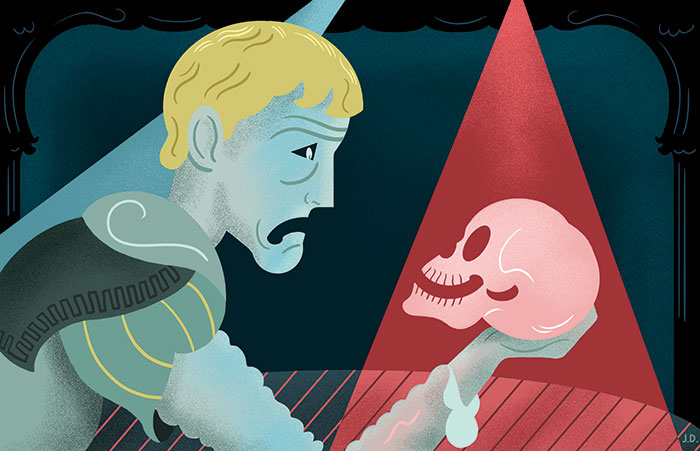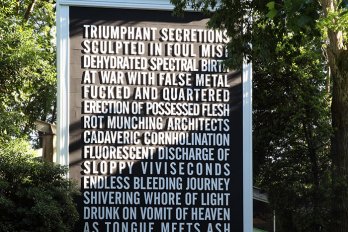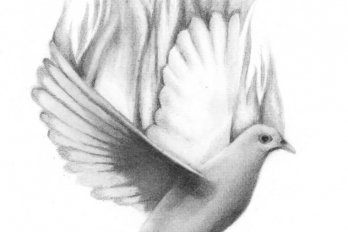It was suitably dramatic, or at least like a bad mystery play, where all the characters are eliminated by the final scene. One by one, in the days leading up to Christmas 2010 and the first two weeks of January, five eminent actors and directors passed away. Canadians Peter Donaldson, Gina Wilkinson, Al Kozlik, and Graham Harley, along with Michael Langham (an Englishman, but a fixture in this country for ages), had enjoyed long and varied careers. For instance, Donaldson, a TV and film actor for more than three decades, had just come off a string of successful productions in Toronto, including George F. Walker’s new And So It Goes at the Factory Theatre, and a revival of Yasmina Reza’s ’90s hit, Art, at the Canadian Stage. Meanwhile, Wilkinson’s work on Toronto playwright Brendan Gall’s Wide Awake Hearts at the Tarragon Theatre, just a few weeks before she died, elevated a muddled play into a sexually charged meditation on the turbulent inner lives of actors.
While reading their various obituaries and appreciations, I couldn’t help noticing that what had earned the deceased a special place in Canadian culture was their contributions to the classical repertoire of plays from other countries. All had worked with North America’s two largest classical repertory companies, the Shaw Festival and the Stratford Shakespeare Festival, which happen to be situated about three hours’ drive from each other in southern Ontario. The Shaw, dedicated to works by or set during the lifetime of its namesake, George Bernard Shaw, is at the halfway mark of its fiftieth season; while Stratford—which was founded in 1953 as a celebration of Shakespeare’s plays but now follows an anything-goes program, from Aristophanes to Andrew Lloyd Webber—will mount its sixtieth season next year.
The departed could die as happy, contented artists, the obits implied, since there was no higher calling than interpreting the words of the masters. Their work in the vibrant and rapidly expanding homegrown theatre movement of the ’60s and early ’70s, and in later Canadian plays, was described as a career necessity, a stepping stone to the classical throne. Whatever nationalist part of me lingered from my tenure as a theatre critic for the Globe and Mail—and, admittedly, it was always a tiny part—felt conflicted about this slap in the face to our culture, and the endless elevation of the classics as the definitive theatrical practice. Didn’t this smack of old colonial attitudes? We continue to operate in a theatrical milieu where our deference to the classical (and largely European) repertoire is coupled with undervaluing our own dramatic articulations. And, increasingly, that disconnect is making our largest theatres appear out of touch.
As a nation, we found our voice in fiction—from Margaret Atwood to Mordecai Richler to Farley Mowat—about the time Canadian theatre festivals came into their own. And in music, cbc Radio 2 substantially cut back on its classical programming in 2008 in favour of more contemporary and Canadian content. Similarly, our television series have finally escaped the clutches of pinafore-and-horse-and-carriage pieces and have turned their attention to the urban experience, as in Flashpoint and Rookie Blue. Yet the continuous influences of Shaw, Stratford, and, since 1998, Toronto’s Soulpepper Theatre Company on the ecology of Canadian theatre reveal a counter-narrative of financial and ideological discomfort with our identity and viability as a culture.
The tensions between the colonial legacy of the classical festivals and our national identity date back to the founding of Stratford. Reflecting on its future in one of a series of books commemorating the Festival’s first three seasons, its inaugural artistic director, Tyrone Guthrie, himself a British import who knew little of his new surroundings, acknowledged but disagreed with the already resonant argument “that a Festival which offers no encouragement to Canadian authors has no right to consider itself a Canadian institution.” Canadian playwrights, Guthrie went on to say, could only benefit from having their works performed by actors “who have received the more various and far-reaching experience which only a classical programme can provide.” This, he added, cultivates an “audience whose imaginative range and critical capacity have been extended” by what they see onstage. The classics therefore constitute a rigorous program of theatre training and cultural aspiration for Canada, which Guthrie establishes at the outset of his argument as “a very dull place to live in.”
His analysis of the theatrical landscape before the establishment of his festival is self-serving but not far from the truth. While the early twentieth century saw an expansion of theatrical houses, they more or less exclusively hosted touring British and American productions. “As far as the word Canadian can be used, ‘Canadian theatre’ before 1920 meant theatre performed for Canadian audiences,” writes Denis W. Johnston in Up the Mainstream: The Rise of Toronto’s Alternative Theatres 1968–1975. In the ’30s, in a reaction to Depression economics, Progressive Arts Club chapters in various cities encouraged a form of agitprop workers’ theatre that was popular but short lived. Meanwhile, the annual Dominion Drama Festival, founded in 1932, was held in different cities as a showcase for amateur Canadian theatre. The DDF’s activities were suspended during the Second World War, and it struggled to find a meaningful place in Canada in the ’50s and ’60s, when theatre became professionalized in earnest. Few, if any, of the plays produced between the wars have any life today outside doctoral theses and historical anthologies.
Historians generally agree that the establishment of the Canada Council for the Arts in 1957 and the centennial celebrations a decade later marked the true beginnings of a distinctly Canadian form of onstage expression. Regional theatres—the Manitoba Theatre Centre in Winnipeg being one of the earliest—provided a home for professional local and touring productions. Still, the programming tilted in favour of American and British hits. That and the establishment of Stratford as a colonial outpost in southern Ontario ignited a nationalist alternative theatre movement in Toronto, which exerted a huge influence across the country. Factory, Tarragon, and Passe Muraille, among others, made it their business to stage works by Canadian playwrights.
As this movement gathered steam in the ’70s, the attacks on Stratford grew more virulent. Don Rubin notes in Canadian Theatre History: Selected Readings that the appointment of Robin Phillips, another Brit, as artistic director at Stratford was seen as a “betrayal of our theatrical identity,” according to director John Juliani. In an open letter in the newly established journal Canadian Theatre Review, Juliani challenged Phillips to a duel “to avenge the honour of our emerging theatrical heritage.” (In 2006, when I interviewed Phillips, he still recalled the “electrifying” experience of being slapped in the face with a glove by Rubin as a provocation during a live radio interview: “With the microphone right under my nose, you could hear me yelp.”)
While the nationalists have toned down their rhetoric and ceased making physical threats, the current artistic directors of Shaw, Stratford, and Soulpepper still grapple with the same old issues: what is Canada to the classics, and what are the classics to Canada? Antoni Cimolino, general director of Stratford, recognizes the pitfalls of viewing the classics as holy texts for communities that equate the repertoire with an emotional and cultural superiority. The festivals, in effect, were building on the school system, particularly English curricula, which only began to include Canadian titles on their reading lists as late as the ’70s, and even then did so sporadically. A child growing up in ’50s English Canada was expected to know the literature of the British Isles, to the deliberate exclusion of homegrown material.
Still, selling cultural superiority in a country where perceptions of inferiority are part of the national fabric is not as easy as it once was. Shakespeare continues to serve as an entry point to reluctant or inexperienced Canadian theatregoers, but often as a kind of bait and switch. “For every Shakespeare on the mainstage, there’s a significant audience that’s coming to the Festival for the first time,” says Cimolino. “They’re trying out Stratford, and so have decided to see that. Once they’re drawn in, they’re interested in theatre.” In ten years as a working critic, I’ve bristled at that theory and have found no evidence for its success. A similar argument can be made in favour of, say, The Lion King’s trickle-down economics: feel the love tonight and see Judith Thompson tomorrow. If the classics or musicals truly gave birth to new, more adventurous audiences, our independent theatres would be packed. In fact, there’s a danger that the higher costs associated with travelling to Shaw and Stratford from nearby cities siphons off entertainment dollars spent elsewhere by middle-class families.
Indeed, marketing the classics has become more difficult as competition for leisure dollars has grown. The Shaw faces unique challenges: while its namesake may have been prolific, it’s not as easy to rotate his plays as it is with Shakespeare at Stratford, where Twelfth Night, As You Like It, and A Midsummer Night’s Dream are pressed into service every few seasons. As a brand, Shaw is not particularly versatile. “I couldn’t do Major Barbara that often,” says artistic director Jackie Maxwell. “And you know what? I don’t want to do Major Barbara every two years.” Meanwhile, musicals outperform even the better-known Shaw plays. The festival’s 2006 production of the frothy Cole Porter musical High Society remains the bestselling show of Maxwell’s tenure to date.
Similarly, Albert Schultz, artistic director of Soulpepper—a company that started with a classical mandate but is now more eclectic—admits that it’s challenging to produce Shakespeare in Toronto, where his company must compete with several outdoor and free productions, as well as nearby Stratford. In February 2011, despite strong reviews (including one from me in the Toronto Star), the company’s innovative production of A Midsummer Night’s Dream struggled to find an audience. Considering the large percentage of theatregoers who flock to Stratford from the Greater Toronto Area, Soulpepper’s inability to move Shakespeare suggests that the audience associates the Bard with the ritual of visiting Stratford. To set itself apart, the company has invested in the postwar absurdist repertoire of Beckett, Genet, and Ionesco, along with forays into Chekhov, an author it has claimed as its own. In other words, for any of these companies to survive they must carve out the classics, but perhaps their stretch of southern Ontario is not big enough for all three major institutions. It could also be that the appetite for the classics is waning, or at least fluctuating. Just don’t expect Canadian plays to pick up the slack.
The classics offer audiences and actors something Canadian plays don’t, and it isn’t quality, but rather scope and range. After a brief government funding windfall in the late ’60s and early ’70s, most of our theatres have suffered one financial crisis or another, which has determined the kind of new works they staged: the smaller the casts, the fewer the sets, and the more contained the themes, the better. English Canadian theatres still follow a formula of workshopping plays, which has effectively meant curtailing and retrofitting them to a standard three-week rehearsal schedule, followed by two to three previews and then a four-week run. Actors are parachuted in and out of plays that may have taken years to develop but just weeks to stage, so their growth as performers is limited from the start. Contrast that with classical theatre, where the plays have undergone decades or even centuries of critical and dramaturgical scrutiny. Most festivals offer more generous rehearsal periods and the chance for actors to work on material with big themes, on physically expansive stages. Even our boldest plays don’t provide the same range, and don’t fill out the festival stages as well.
For her first season as artistic director of the Shaw Festival in 2003, Maxwell featured an English translation of The Coronation Voyage, Michel Marc Bouchard’s ambitious French play set in 1953. It was a costly programming mistake. While extenuating circumstances—SARS, the power blackout, and increased border crossing anxieties—affected ticket sales, the experiment failed again the following year when Maxwell mounted George F. Walker’s Russian-themed Nothing Sacred on the same big stage. “What I started to realize at the time is that these organizations are huge ocean liners. I had to turn them more slowly than I thought,” she says. From then on, Canadian plays, or those by lesser-known playwrights (and that includes women from almost any era), would be relegated to the smaller Royal George or Court House theatres, where, for example, Ann-Marie MacDonald’s Belle Moral enjoyed two successful engagements. Small size matters.
Stratford’s experiments with Canadian plays go back to the ’60s, when it first staged the work of James Reaney. But there was no consistent inclusion of local authors until the beginning of the past decade. As with Shaw, new Canadian plays are mainly staged in the smallest of theatres, for as short a run as possible, to limit their potential harm to the box office. Most of them open months into the season, and run in repertoire until late September. So while the musical Evita may get over 100 performances at a 1,090-seat theatre, a Canadian play often tops out at thirty in a 260-seat auditorium, and fewer buses full of seniors, schoolchildren, and tourists attend.
Just as all three companies scramble to find a place for Canadian playwrights, they’re also wading, tentatively, into the issue of diversity. Blind casting (or non-traditional casting, as it’s better known) at Stratford, Shaw, and Soulpepper has addressed one component of that question: how to provide roles for a wider, multiracial group of actors. However, plays written by and from the perspective of the same multicultural communities—in other words, outside the Anglo-Irish-American tradition—remain rare. The Shaw’s first production by an African-American playwright takes place this season. In 2006, Stratford produced Djanet Sears’s Harlem Duet, its first play by a black author (with the Festival’s first all-black cast). At the 260-seat Studio Theatre, that year’s run of thirty-five performances sold approximately 75 percent of capacity—a modest, but hardly a runaway, success.
The box office hit that season was Donna Feore’s feel-good staging of Lionel Bart’s Oliver! The theatrical equivalent of comfort food, that production and others in the same vein (Jesus Christ Superstar this season) confirm the conservative programming decisions of the festivals, which, in a classic vicious-circle model, build on the ticket-buying habits of an older, more affluent demographic. Both Cimolino and Maxwell insist that the same audience is not risk averse by nature, but the adventurous among them don’t exist in large enough numbers to level the playing field between the classics and new Canadian plays.
Stage enthusiasts often turn up their noses at film and television for their commercial tendencies, but in doing so they sidestep theatre’s own form of catering to the masses. In English Canada today, that would be the white, older, conventional demographic, who, bless them, keep theatre alive with their disposable incomes and charitable donations (for how much longer, though, is another issue altogether). There will always be exceptions for small, artistically grounded shows, such as Michael Healey’s The Drawer Boy, that have broken sales records and crossed borders; and for more commercial ones, like Trey Anthony’s ’Da Kink in My Hair, which proved that a sizable black theatre audience exists.
But in Canadian theatre, the works of Shakespeare, Ibsen, Chekhov, and, to a certain extent, Shaw replicate a role normally assigned to Hollywood in the film industry. Even if some of them underperform at the box office, they are the blockbusters. (Shaw is Green Lantern to Shakespeare’s The Dark Knight.) The fact that the two festivals do their best business in the summer months, also Hollywood’s busiest time, reinforces that impression. Our plays can only serve as marginal alternatives or subplot narratives. We’ve come a long way to squeeze in a bit of space on the festivals’ playbills for a production by Walker or John Mighton, but not far enough to make them the main attraction. Not for a while yet.
This appeared in the September 2011 issue.





